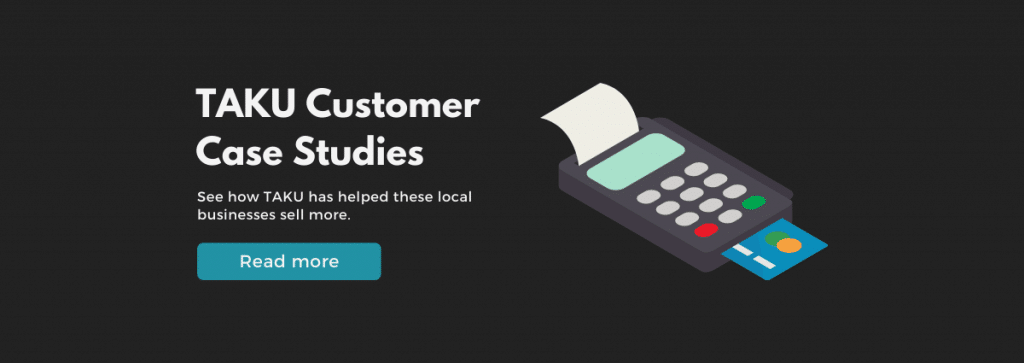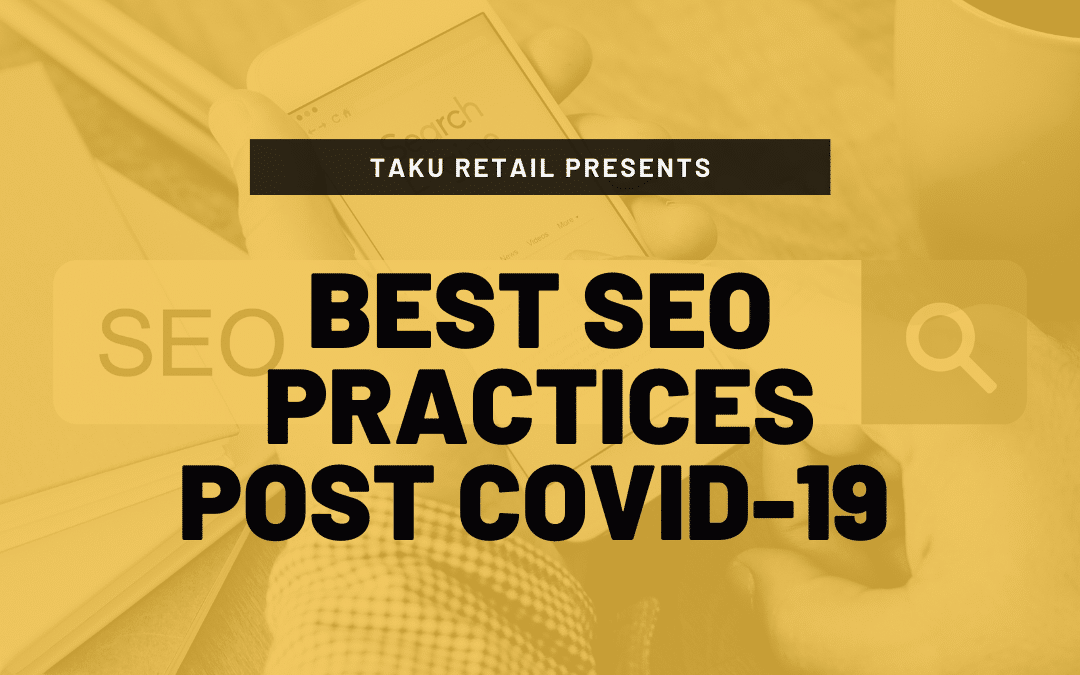After over a year of lockdowns and re-openings, retailers are finally able to open up their doors to the public again. Now, more than ever, retailers need to take more initiative in their local SEO efforts to ensure that they are visible to online shoppers.
But what is local SEO and how does it help my retail business?
SEO stands for “search engine optimization.” This refers to marketing that helps increase the quantity and quality of visitors online that find you through organic search engine results. “Organic search engine results” is just a fancy way of saying “the top results that show up without paid advertising” in a search engine when somebody searches using certain words. Here’s an example in what an “organic result” looks like in the Google search engine, but it is similar in Bing or Yahoo.
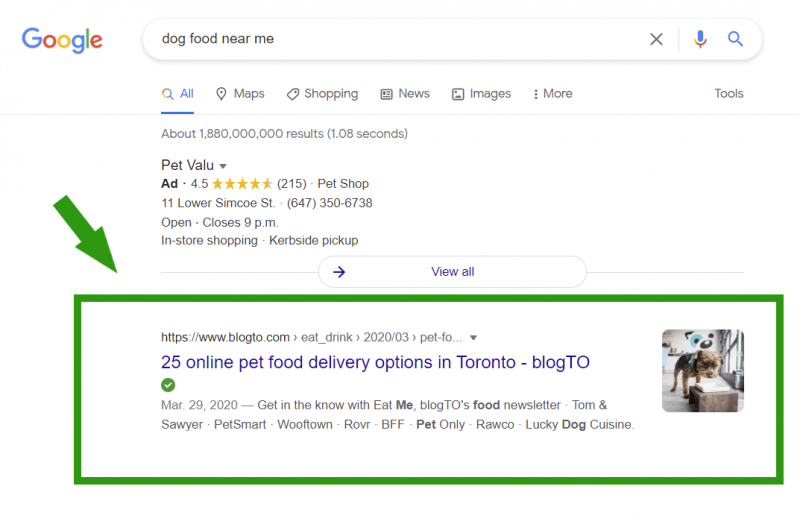
Local SEO is just a more localized version of this – it’s the way that local businesses can show up higher in organic search engine results. An example could be a customer looking for a bag of Acana dog food in their area. When they type “Acana dog food near me,” Google matches the search to local listings in their area.

How to improve where you show up in “search results“
Have you ever thought of how results pop up on your ‘results’ pages? SEO plays a big role in that. One of the main things that affect how websites are displayed on search engines is the number of and quality of keywords in the website.
What is a keyword?
Keywords are either statements, questions, or words that people put into the search bar in a search engine. Finding the right keywords for your website and other online store listings is important because it can affect how and where you show up in search engine results.
Retailers looking to improve their local SEO should do some keyword research and take proactive efforts to make sure that their website and other listings consistently include the most popular keywords. Over time, this will help their stores rank better in local search engine results. The best way to continuously include popular keywords is to create new and relevant content such as new blog posts or website pages. At the same time, it’s important to always have some evergreen content (content that will remain relevant for the foreseeable future and can be re-shared and repurposed), suitable for the industry (e.g. petstores).
What are examples of evergreen content?
Blog posts or pages featuring clients, products or services offered, as well as their long-term benefits. The goal is to create content that presents the business as an expert within an industry in order to build trust with customers.
Why you need a mobile-friendly website
Another SEO-friendly move includes improving mobile responsiveness on your store website. “Mobile responsiveness” refers to how well your retail website looks on all different screen sizes, especially mobile smartphones. In 2020, just under half of the world’s population owned a smartphone with 63,000 Google searches performed per second. When a website cannot change to fit different screen sizes for different devices automatically, new visitors will leave the website faster as it’s not a good customer experience.
It’s already harder in mobile as statistics have shown that capturing peoples’ attention on smartphones is more difficult (a difference of 28% as compared to Desktops) due to the smaller amount of space from which you can “sell” your business. But when you add this to the fact that people are also increasingly relying on their smartphones as their main source of information and that “search” online today usually starts from a smartphone, mobile responsiveness is key to being found online today.
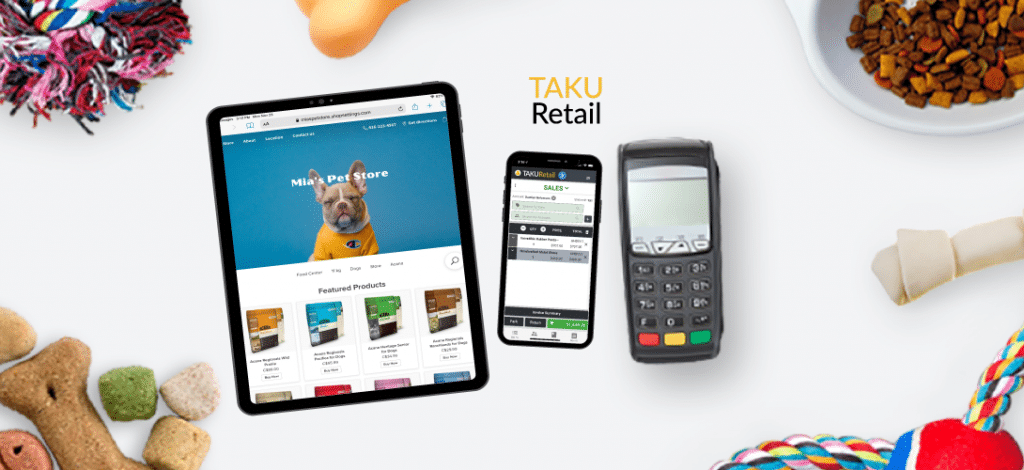
Targeting new keywords
Another way to increase traffic to your website is to rank for new keywords (click here to jog your memory on keywords) that target challenges or new needs of your customers. In order to know how to show up for specific terms, retail business owners need to do keyword research. One good resource is Neil Patel: his website offers free resources to check what keywords you are ranking for and how to optimize your website so that you show up in more related searches.
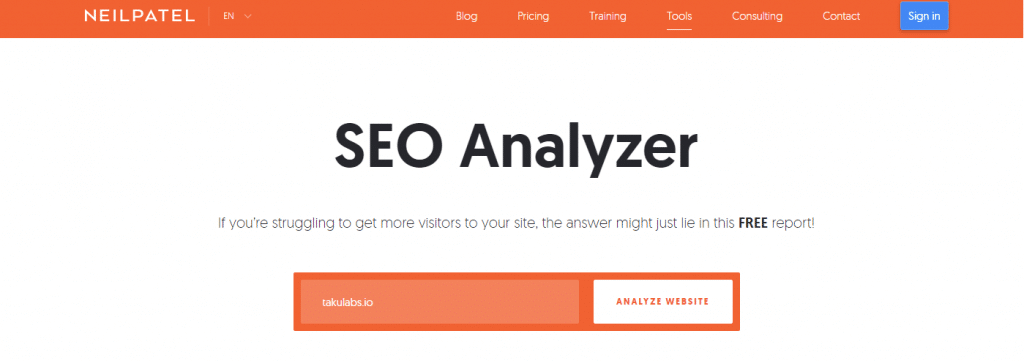
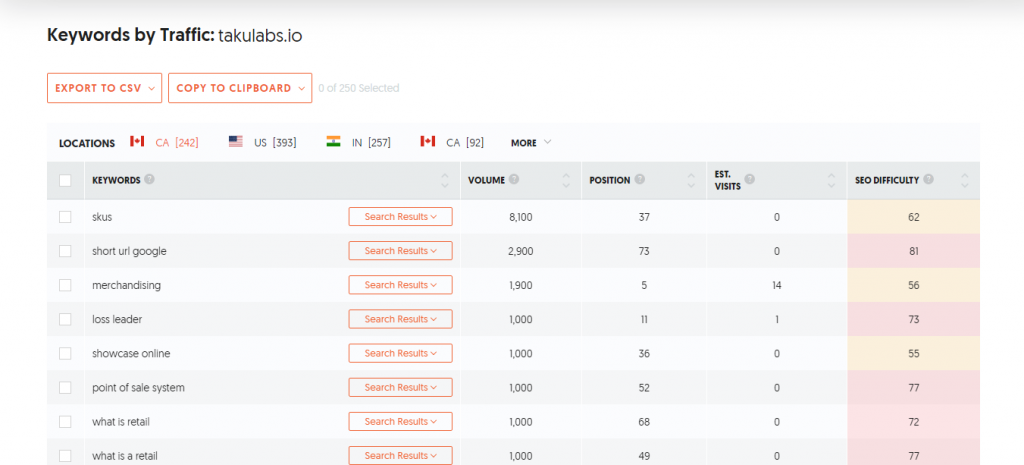
Optimizing your Google My Business (GMB) profile
Over 80% of customers go online to find more information about a store or product before ever setting foot in a store. People are getting increasingly more tech savvy, which means that retailers need to adapt to new ways of shopping. Google My Business (GMB) is one of the first stops that new customers usually make to find out details such as opening hours or reviews that past customers have left. It is important to update GMB because:
- It’s a free tool that can automatically bring more exposure to your business
- It helps customers learn more about your business through features such as Posts, online bookings, photo galleries and store reviews.
- It helps customers find you in Google Maps.
⭐ What is SWIS (See What’s In Store)?
See What’s In Store (SWIS) helps retailers showcase their product to shoppers in their area. When shoppers search for products (such as “Acana pet food near me”) in Google, they will see a list of nearby locations that carry those products. If those stores have SWIS activated, Google will show a free product showcase highlighting exactly what products are available in store. Because this feature is most effective when the product availability is accurate, a SWIS product showcase is best when it is managed by a store POS directly linked to Google. The added benefit of SWIS is that it turns product names into keywords which helps retailers show up higher in search results.
Read more about how TAKU has helped retailers globally increase their sales?
